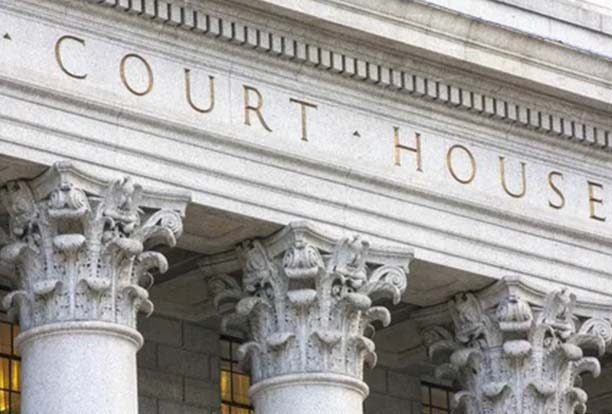
A divorce decree is the final legal document issued by a court that formally ends a marriage. It outlines the terms and conditions of the divorce, including the division of assets, child custody arrangements, spousal support, and other relevant matters. Understanding the contents of your divorce decree is crucial, as it details your legal rights and obligations moving forward. This blog aims to decode the elements of a divorce decree and explain what each part means.
What is a Divorce Decree?
A divorce decree, also known as a judgment of dissolution, is a court order that finalizes the divorce process. It is issued after all the issues related to the dissolution of the marriage have been resolved, either through a court trial or a settlement agreement between the parties. The decree is legally binding and enforceable.
Key Components of a Divorce Decree
1. Case Information:
- Case Number: The unique identifier assigned to your divorce case.
- Court Details: Information about the court that issued the decree, including the judge’s name and court location.
2. Parties Involved:
- Petitioner and Respondent: The names of the individuals involved in the divorce, typically labeled as petitioner (the one who filed for divorce) and respondent (the other spouse).
3. Grounds for Divorce:
- The legal reason for the dissolution of the marriage, such as irreconcilable differences or fault-based grounds like adultery or abandonment.
4. Division of Assets and Debts:
- Property Division: Details on how marital assets (homes, cars, investments, etc.) are divided between the parties.
- Debt Allocation: Information on how marital debts (loans, credit card debts, etc.) are allocated.
5. Spousal Support (Alimony):
- Type of Support: Whether it is temporary, rehabilitative, or permanent alimony.
- Amount and Duration: The amount to be paid, the payment schedule, and the duration of the support.
6. Child Custody and Visitation:
- Custody Arrangements: Whether custody is joint or sole, and which parent is the primary custodial parent.
- Visitation Schedule: Specific times and conditions for the non-custodial parent’s visitation rights.
7. Child Support:
- Payment Amount: The amount of child support to be paid, including any adjustments for changes in income.
- Payment Schedule: How and when the payments are to be made.
8. Health and Life Insurance:
- Provisions for health insurance coverage for children and possibly for the spouse receiving support.
- Requirements for maintaining life insurance policies to secure support obligations.
9. Name Change:
- Authorization for a spouse to revert to their maiden name or a previous legal name.
10. Legal Fees:
- Details on the payment of legal fees, including whether one party is responsible for the other’s attorney fees.
Understanding Each Component
Case Information: Provides essential details to identify the divorce case and the issuing court, important for any future legal actions or references.
Parties Involved: Clearly identifies who is subject to the decree’s terms, ensuring both parties understand their rights and obligations.
Grounds for Divorce: States the legal basis for the divorce, which can impact alimony and property division in fault-based divorces.
Division of Assets and Debts: Specifies how assets and debts are divided, crucial for financial planning and ensuring fair distribution.
Spousal Support (Alimony): Details the financial support one spouse must provide to the other, impacting both parties’ financial futures.
Child Custody and Visitation: Outlines custody arrangements and visitation schedules, ensuring the best interests of the children are met and providing structure for parental involvement.
Child Support: Ensures that children receive financial support from both parents, detailing the amount, duration, and manner of payments.
Health and Life Insurance: Secures ongoing health insurance coverage and protects support obligations through life insurance policies.
Name Change: Allows a spouse to legally revert to a former name, often an important step for personal identity reasons post-divorce.
Legal Fees: Clarifies responsibility for legal costs, which can be significant and impact post-divorce financial stability.
Post-Decree Actions
Once the divorce decree is issued, there are several important steps to take to ensure compliance and address any remaining issues:
1. Update Personal Records: Notify relevant institutions and update personal records to reflect your new marital status. This includes Social Security, DMV, banks, and insurance companies.
2. Implement Custody and Support Orders: Begin following the custody and visitation schedule and ensure timely child and spousal support payments.

3. Adjust Financial Accounts: Close or adjust joint accounts and update beneficiaries on retirement accounts, insurance policies, and wills.
4. Monitor Compliance: Keep detailed records of support payments and visitation schedules to ensure compliance and address any disputes promptly.
Modifying a Divorce Decree
In certain circumstances, a divorce decree can be modified post-judgment. Common reasons for modification include:
- Change in Income: Significant changes in either party’s income may warrant adjustments in spousal or child support.
- Relocation: If one parent needs to move, it may be necessary to modify custody and visitation arrangements.
- Changes in Children’s Needs: As children grow, their needs may change, requiring adjustments to custody or support orders.
Enforcing a Divorce Decree
If one party fails to comply with the terms of the divorce decree, enforcement actions may be necessary:
- Contempt of Court: Filing a motion for contempt can compel compliance and potentially result in penalties for the non-compliant party.
- Income Withholding: For child or spousal support, income withholding orders can ensure payments are deducted directly from wages.
- Garnishment: Court-ordered garnishments can be applied to bank accounts or other assets to fulfill support obligations.
Case Example: Enforcing Child Support

A parent struggling to receive child support can file a motion for contempt, leading to court-ordered enforcement actions such as wage garnishment or even incarceration for the non-compliant parent. This ensures that the child receives the necessary financial support.
Decoding your divorce decree is essential to understanding your legal rights and obligations following the dissolution of your marriage. Each component of the decree plays a critical role in shaping your post-divorce life. If you have any questions or require further clarification, consulting with a family law attorney can provide the guidance you need.

